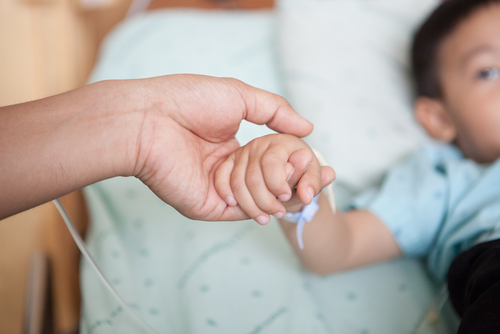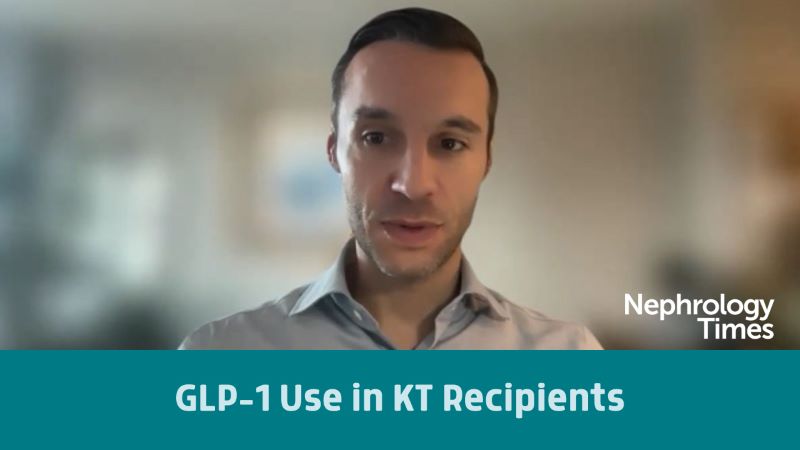
The optimal treatment for kidney failure is kidney transplantation. However, transplantation is associated with challenges to patient and graft survival, including allograft rejection, infection, and graft dysfunction. There have been few large multicenter outcomes studies conducted among pediatric kidney transplant recipients. According to Maral Baghai Arassi, PhD, and colleagues, there is a need for studies analyzing age-related differences in outcomes in the pediatric patient population.
Several benchmark studies among pediatric cohorts in North America and China have occurred. Data from the CERTAIN registry include 95 pediatric kidney transplant centers in 26 European countries and 3,930 pediatric patients. For the current retrospective, multicenter, longitudinal cohort study, the researchers utilized CERTAIN registry data to bridge the gap in age-related outcome data for pediatric kidney transplant recipients in Europe treated with a tacrolimus-based immunosuppressive regimen. Results were reported online in Kidney International Reports.
The analysis included 20-year data on 802 pediatric patients at 40 centers in 14 countries. To assess age-related differences in outcome, the cohort was divided into three age groups: (1) infants and children <6 years of age; (2) school-aged children 6 to 12 years of age; and (3) adolescents >12 years of age.
Outcomes of interest were infection, rejection, graft dysfunction, diabetes mellitus, death, and cumulative hospital days. The outcome measure was a death-censored composite endpoint, allograft dysfunction, defined as either graft loss, or estimated glomerular filtration rate (eGFR) ≤30 mL/min/1.73 m2, or a ≤50% decline from baseline eGFR at month three post-transplant.
Whole blood trough levels were used to quantify tacrolimus exposure. Trough level data were categorized into early (months one to three), mid (months 6-12), and late (months 18-24) post-transplant periods.
The study cohort included patients who underwent kidney transplantation at one of 40 study centers between 1999 and 2019. Of the 802 patients, 40.3% (n=323) were girls and 59.7% (n=479) were boys. Median age at transplantation was 11.1 years, 91.4% were of Caucasian descent, 3.1% were of African descent, and 5.4% were of Asian descent. The primary cause of kidney disease was congenital anomalies of the kidney and urinary tract (39.4%), followed by hereditary cystic or congenital diseases (25.3%) and primary glomerular diseases (17.6%).
Sixty-nine percent of patients received a kidney from a deceased donor. The initial immunosuppressive regimen for all 802 participants was tacrolimus, mycophenolate mofetil, and glucocorticoids. Forty-one percent of patients received additional induction therapy with basiliximab (34.2%), antihymocyte globulin (5.4%), rituximab (2.0%), or daclizumab (0.7%). The median follow-up time was 48 months post-transplant.
There were 206 patients in the infants and children group, 278 in the school-aged children group, and 318 in the adolescent group. There were significant differences among the age groups in sex, follow-up times, preemptive transplantation, primary kidney disease, induction therapy, previous kidney transplants, immunosuppressive therapy at year one, and tacrolimus formulation.
Within the first two years following transplant, biopsy-proven rejection episodes occurred in 23.8% of patients. There were no statistically significant differences between recipients of living-donor transplants and deceased-donor transplants in the number of rejection episodes (26.0% and 22.8%, respectively). There were significant differences in the prevalence of rejection by age. The highest rate of rejection was in adolescents (28.9% vs 18.9% in infants and young children; P=.018).
Most rejections occurred in the first year after transplant when stratified by year. Adolescents experienced significantly more rejections than infants and young children and school-aged children. The rate of rejection in adolescents was 10.4%, compared to 4.7% in school-aged children and 4.9% in infants and young children (P=.042). Results of Kaplan-Meier analysis revealed significantly higher rejection-free survival in infants and young children than in adolescents throughout the entire 48 months of follow-up.
The most common outcome event in the first two years following transplantation was infection, with 65.2% of patients experiencing at least one infectious episode. The highest incidence of infections occurred in infants and young children (80.6%), followed by school-aged children (65.5%) and adolescents (55.0%; P<.0010). The incidence of recurrent infections was also highest among infants and young children (66.5% vs 33.6% in adolescents, P<.001), a pattern that was consistent in both years one and two post-transplant (both P<.001).
The most common type of infection was gastroenteritis, followed by lower respiratory tract infections and pyelonephritis (all P<.001 for infants and young children vs adolescents). More severe infections such as sepsis and other relevant infections were more common in infants and young children. The risk of infection was significantly higher in infants and young children than in adolescents and school-aged children.
During the first two years following transplant, the overall incidence of graft dysfunction, diabetes mellitus, and death was low (2.8%, 1.7%, and 0.1%, respectively). Diabetes mellitus was significantly more common in adolescents compared to school-aged children and infants and young children (3.8% vs 0.7% and 0%; P=.002).
There were no significant age differences over the follow-up period for graft dysfunction or death. At three, 12, and 24 months post-transplant, infants and young children and school-aged children had a higher eGFR compared to adolescents (P<.001).
Of the overall cohort, 91% experienced at least one hospitalization during the first two years after transplant. There was no significant difference between age groups. Infection was the most common reason for hospitalization. The total number of hospital days was significantly higher in infants and young children compared to adolescents and school-aged children. The risk of hospitalization was significantly higher among infants and young children than in adolescents and school-aged children.
Tacrolimus trough levels were significantly lower in infants and young children. Infants and young children also had lower tacrolimus concentration-to-dose ratios, and higher tacrolimus interpatient variability (all P<.01) compared to adolescents.
The study findings were limited by the retrospective design, as well as by the inability to detail infections such as Epstein-Barr virus, BK polyomavirus, and CMV.
In conclusion, the authors said, “This is the largest study to date in European pediatric kidney transplant recipients on a tacrolimus-based immunosuppressive regimen, and it shows important age-related differences in rejection rates, infection episodes, as well as tacrolimus exposure and clearance. [These] data suggest that immunosuppressive therapy in pediatric kidney transplant recipients should be tailored and personalized according to the age-specific risk profiles of this heterogeneous patient population. The data may serve as a benchmark for future studies with novel immunosuppressive drugs.”
Source: Kidney International Reports.







 © 2025 Mashup Media, LLC, a Formedics Property. All Rights Reserved.
© 2025 Mashup Media, LLC, a Formedics Property. All Rights Reserved.